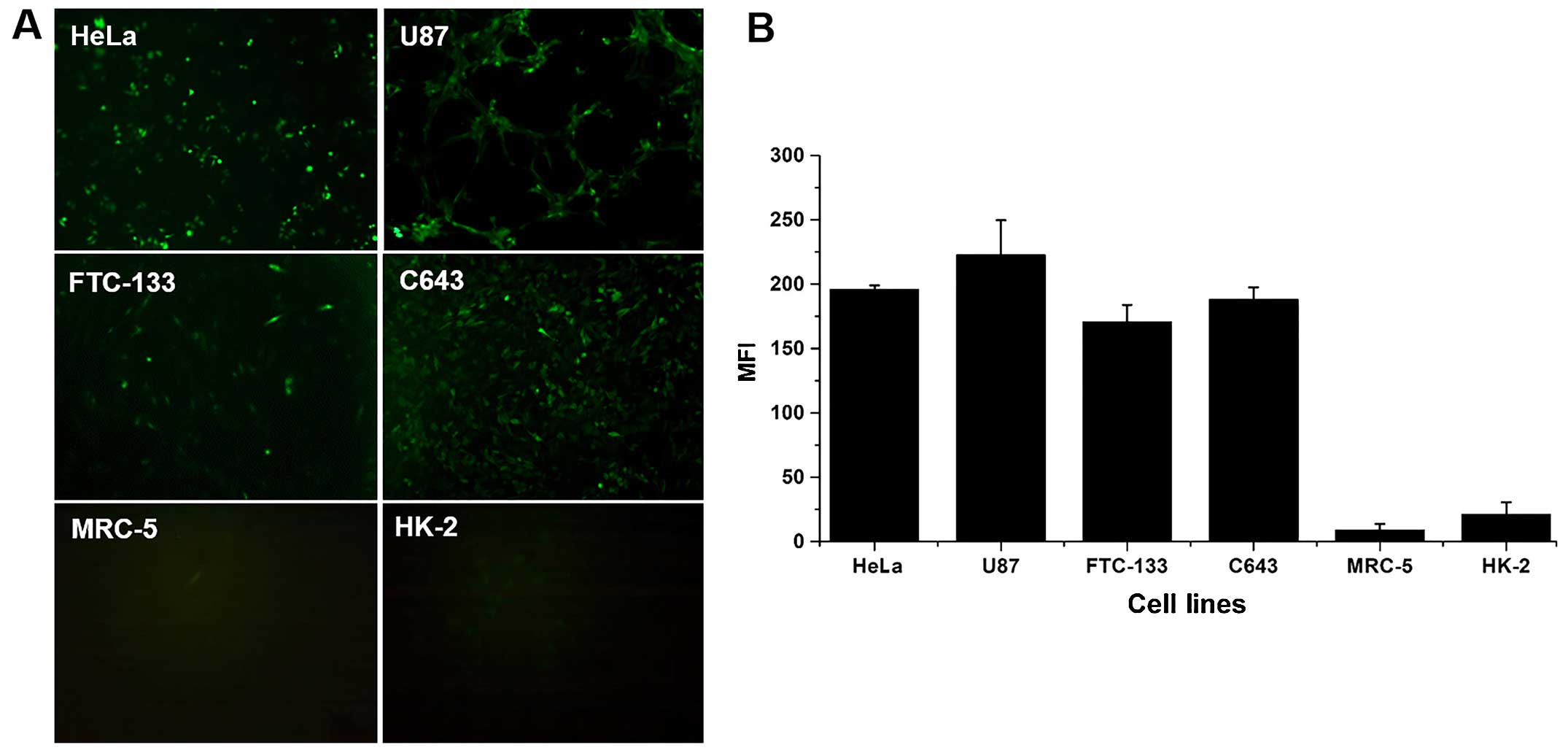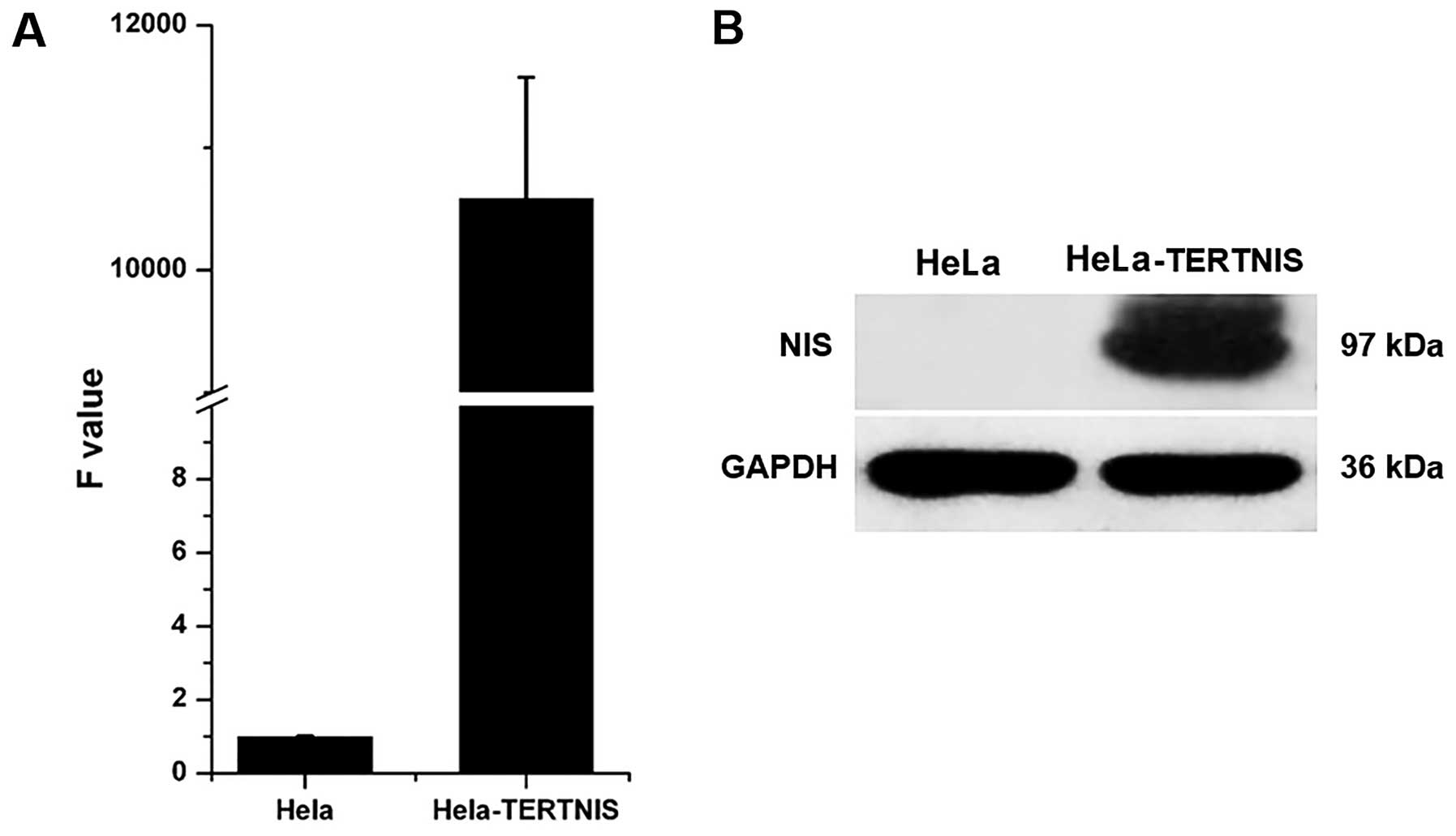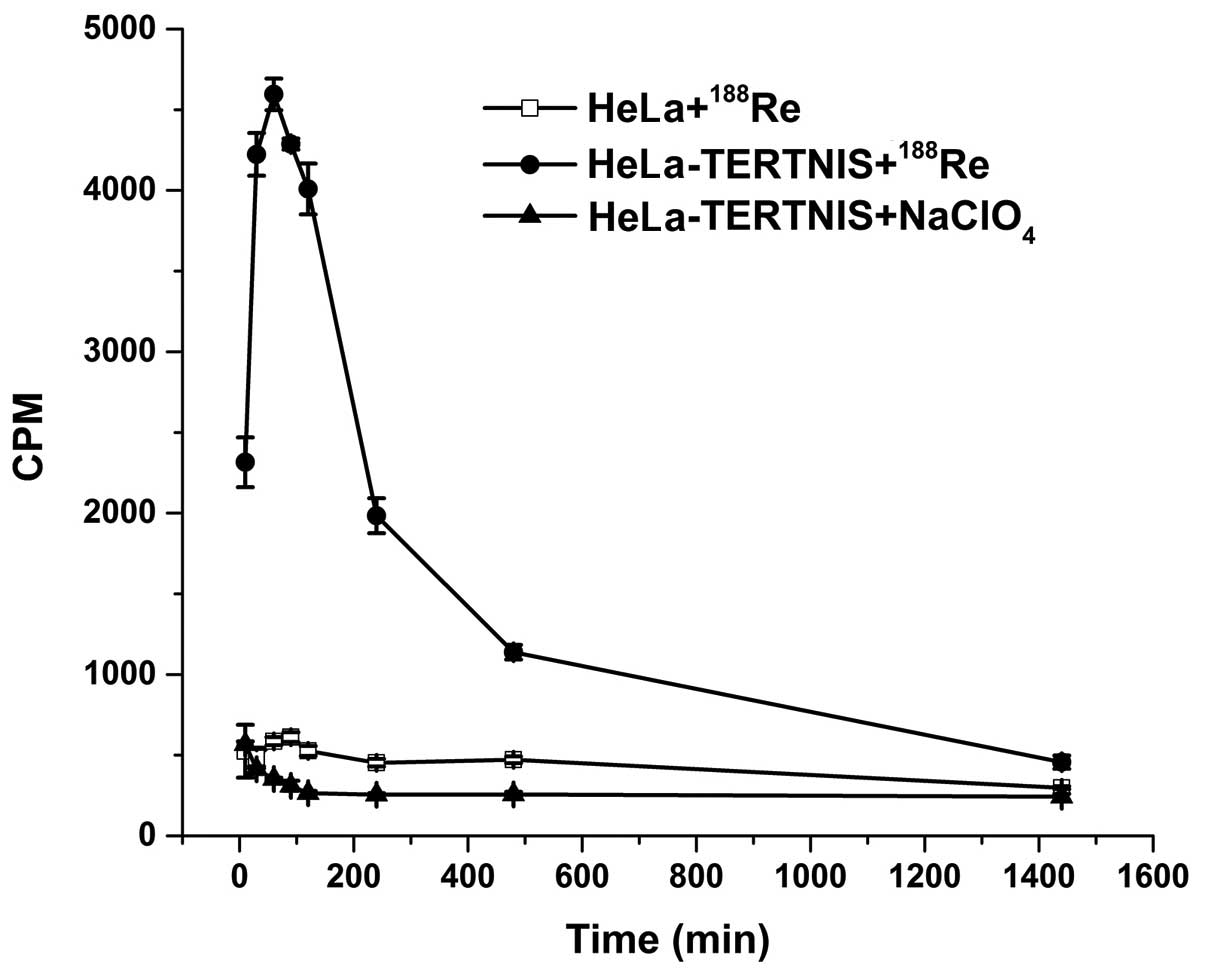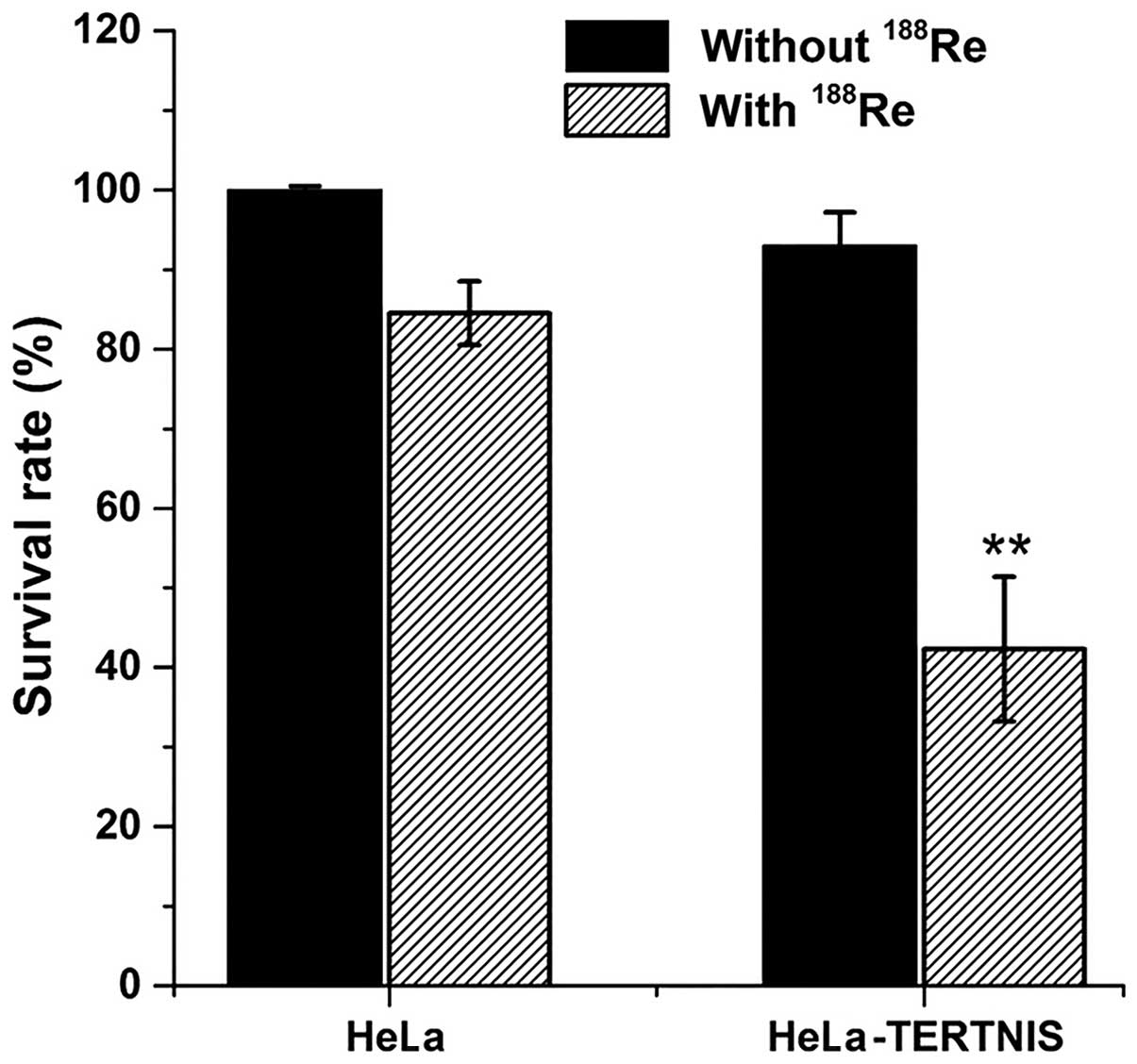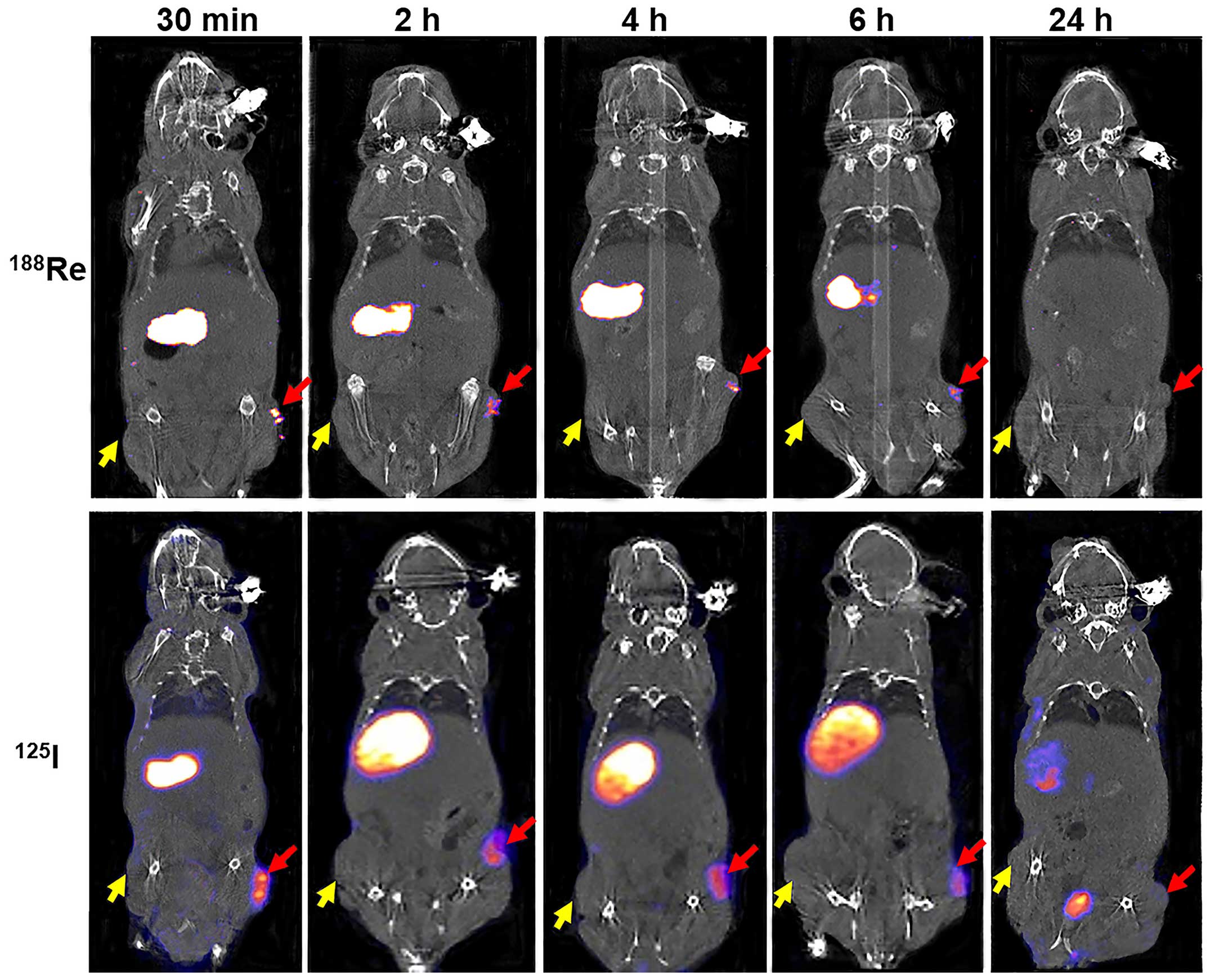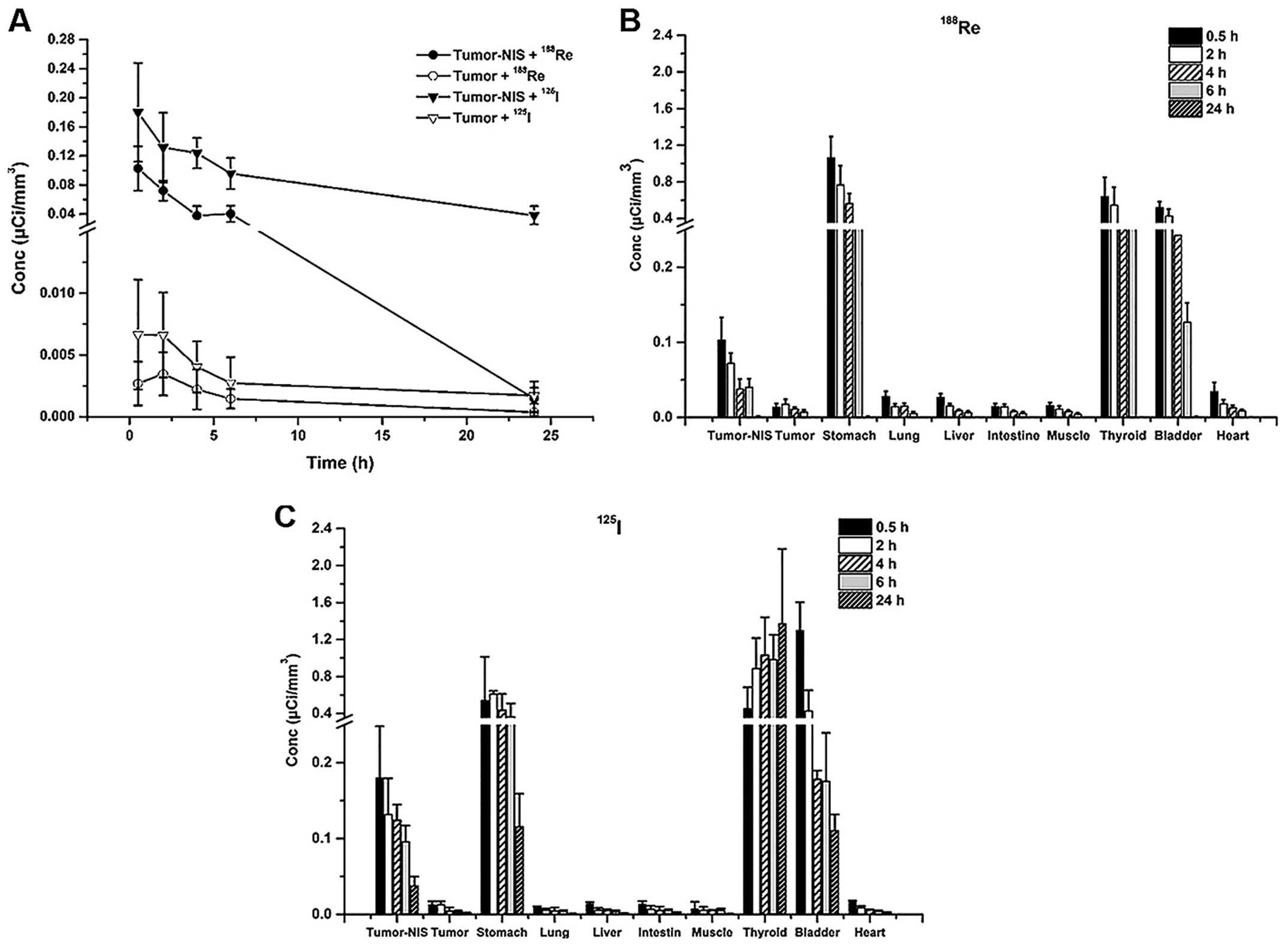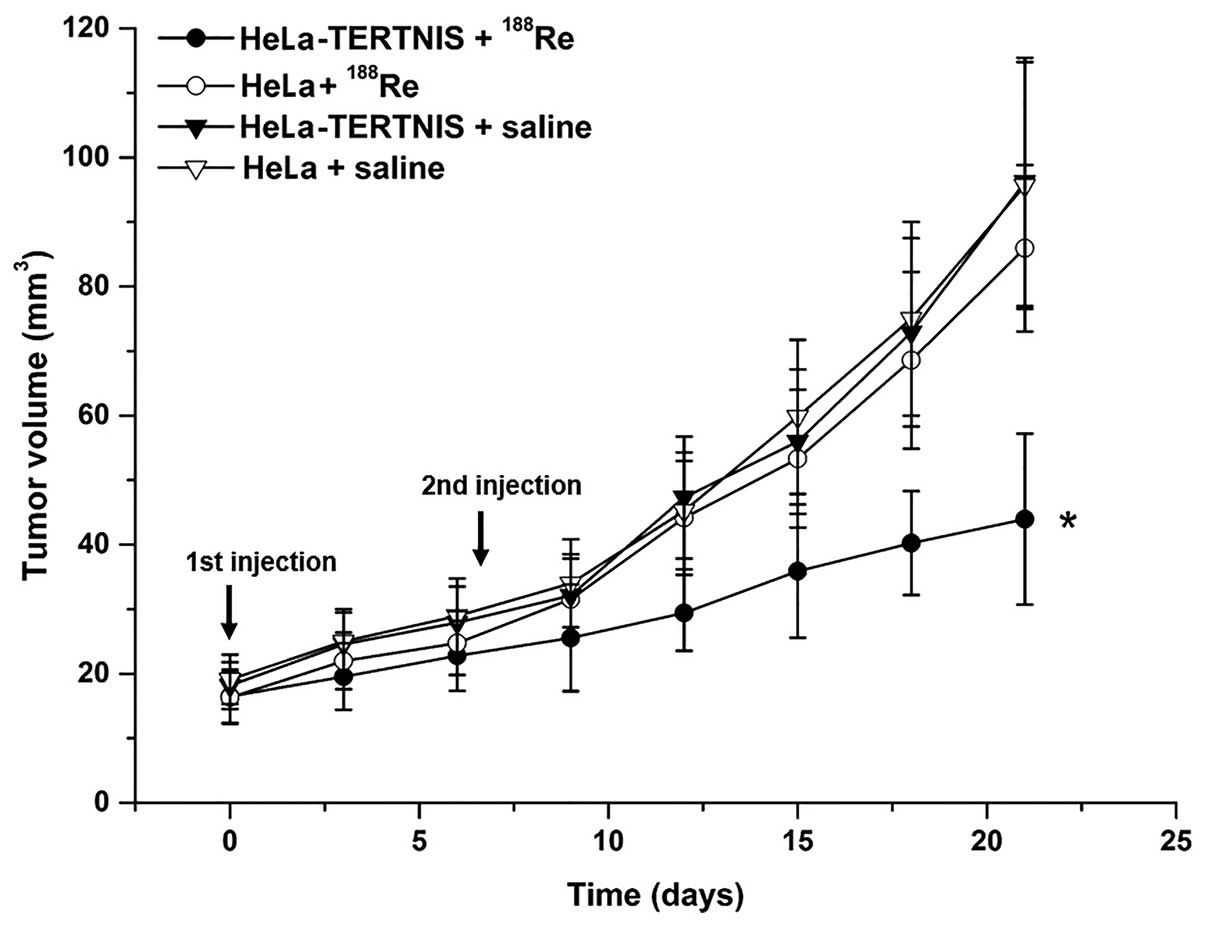Use of rhenium-188 for in vivo imaging and treatment of human cervical cancer cells transfected with lentivirus expressing sodium iodide symporter
- Authors:
- Published online on: August 24, 2016 https://doi.org/10.3892/or.2016.5034
- Pages: 2289-2297
Metrics: Total
Views: 0 (Spandidos Publications: | PMC Statistics: )
Total PDF Downloads: 0 (Spandidos Publications: | PMC Statistics: )
Abstract
Although survival rates for cervical cancer have improved, they need further improvement in patients with distant metastases. The sodium iodine symporter (NIS) gene has often been used in cancer therapy and imaging. We examined the therapeutic effects of rhenium-188 (188Re) in a cervical cancer xenograft model expressing the NIS gene under the control of the tumor-specific human telomerase reverse transcriptase (hTERT) promoter. We constructed two recombinant lentiviral vectors expressing enhanced green fluorescent protein (eGFP) or the NIS gene driven by the hTERT promoter. To determine the tumor-specific transcriptional activity of the hTERT promoter, the eGFP-expressing vector was stably transfected into tumor cells and normal cells. A cervical cancer HeLa cell line stably expressing NIS (HeLa-TERTNIS) was created and examined in a similar way. HeLa and HeLa-TERTNIS tumor xenografts were transplanted in nude mice, and in vivo 188Re distribution was measured using micro-SPECT/CT imaging. The therapeutic effects of 188Re were assessed over 21 days on the basis of tumor volume and the immunohistochemical findings of excised tumors. eGFP expression controlled by the hTERT promoter was substantially higher in the tumor cells than normal cells. Quantitative PCR and western blotting confirmed that HeLa-TERTNIS cells expressed high levels of NIS mRNA and protein, respectively. Further, 188Re uptake and accumulation were significantly higher in HeLa-TERTNIS cells and xenografts than HeLa cells and xenografts. In vitro and in vivo, 188Re significantly reduced the survival of HeLa-TERTNIS cells and inhibited the growth of HeLa-TERTNIS xenografts, respectively. Immunohistochemical staining showed that HeLa-TERTNIS xenograft tumors expressed higher levels of NIS and caspase-3 and lower levels of Ki-67 than HeLa xenograft tumors. Our findings indicated that hTERT promoter-driven expression of the NIS gene in HeLa cells led to 188Re uptake and therapeutic effects. Thus, NIS-based gene therapy and imaging using the hTERT promoter and 188Re may be possible.



